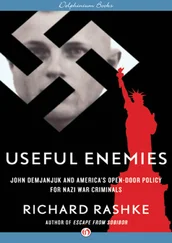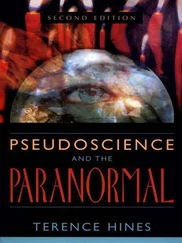The Zinoviev letter and the ARCOS raid
The Ewer–Hayes network first attracted MI5’s interest in 1924 in the aftermath of the Zinoviev letter scare. The background was this. A Scottish communist named John Ross Campbell, acting editor of the Workers’ Weekly , was arrested on 5 August on the instructions of Sir Archibald Bodkin, the Director of Public Prosecutions. He was charged under the Incitement to Mutiny Act of 1797 with seducing members of the armed forces from their allegiance. He had done this, Bodkin alleged, by publishing ‘An Open Letter to the Fighting Forces’, expressed in terms similar to Cecil L’Estrange Malone’s speech of 1920 at the Hands Off Russia meeting. Campbell urged ‘soldiers, sailors and airmen, not merely to refuse to go to war, or to refuse to shoot strikers during industrial conflicts’, but also to join with urban proletariat and rural labourers ‘in a common attack upon the capitalists, and to smash capitalism forever, and institute the reign of the whole working class’. Bodkin’s motives were mixed, according to A. J. P. Taylor: ‘perhaps stupidity (and the director of public prosecutions is usually a stupid man); perhaps also to embarrass the government’. Certainly Campbell was arrested on the same day that Ramsay MacDonald’s Labour government reached terms for an Anglo-Russian trade treaty, which communism’s adversaries were determined to thwart. When the government withdrew the prosecution on 13 August (on the pretext that Campbell was a decorated soldier, who had been crippled by war wounds), its opponents protested at political interference with the law. A general election was called when on 8 October MacDonald’s government opposed and lost a parliamentary motion calling for an independent tribunal to inquire into the handling of Campbell’s prosecution. 24
Amid the furore over the proposed Anglo-Russian treaty and the Campbell case, a message was supposedly sent from Moscow, dated 15 September 1924, from Grigory Zinoviev, the head of the Comintern, to the CPGB’s general committee. The message conveyed Comintern orders to prepare for revolution by subverting the armed forces and by duping Labour party leaders. It was obtained by the SIS station in Riga, which sent it to SIS headquarters in London on 2 October. SIS circularized copies to the Foreign Office, Admiralty, War Office, Air Ministry, MI5 and Scotland Yard (which failed to pass it to Special Branch). The letter was spurious, probably concocted by White Russian forgers in Riga, and possibly planted by die-hard intelligence anti-Bolshevists, but it differed little from genuine Moscow messages to the CPGB. Lakey told MI5 that the CPGB gave Ewer a categorical denial that it had received any such letter. As both the army and MI5, even without the Campbell case, feared subversion of troops, MI5 on 21 October sent copies of the Riga letter to General Officers Commanding in Britain. A copy certainly went to Conservative Central Office (most probably by the hand of Sir Joseph Ball, head of MI5’s investigative branch); Desmond Morton of SIS may have meddled alongside Ball; and another copy of the letter was, according to Morton, given by Stewart Menzies of SIS to the Daily Mail . The Daily Mail , which doubtless received a confirmatory copy from Conservative Central Office, published the forgery four days before the general election on 29 October. Publication did not swing voters against socialism: the financial terms of the doomed Anglo-Russian treaty aroused more suspicion. Labour got 5.3 million votes, compared with 4.3 million in 1923; but the collapse of Liberal support since 1923 gave a majority of seats to the Conservatives, and created a bitter Labour feeling that they had been cheated out of power by the Daily Mail ’s Zinoviev stunt.
In the final meeting of the Labour Cabinet after their defeat, Lord Parmoor, Sir Charles Trevelyan and Josiah Wedgwood voiced their suspicion that ‘Crowe and Gregory had stooped to a mean political trick in order to damage the Labour Party,’ reported the official taking the minutes, and ‘were quite prepared to blow up the F.O. if they could get rid of the spy system’. (During the 1930s Trevelyan was one of the most gullible of fellow-travellers to Bolshevist Russia, who described Stalinist penal colonies as a ‘grand method of human regeneration’, while Parmoor was an apologist for Stalinist slave labour and religious persecution.) In fact Gregory had opposed publication, and Crowe was so mortified by his mismanagement of the letter’s distribution that he broke down in tears as he apologized to MacDonald for contributing to the election defeat. ‘The Zinoviev letter killed Crowe,’ MacDonald said in 1928. ‘He never lifted up his head after that.’ 25
Generations of Labour activists nurtured festering resentment of MI5 for plotting to install the Conservatives in power: the party’s antagonism towards the intelligence services continues to this day. But it was suspicions of the financial terms of the Anglo-Russian treaty, and MacDonald’s refusal to institute a tribunal of inquiry into the Campbell case, coupled with Liberal voters transferring to the Conservatives, that lost Labour power: not the Zinoviev stunt. On the other side, from 1925 onwards, SIS collected ample and reliable evidence that in response to the Riga forgery Moscow sought to discredit, mislead and confuse the British intelligence services by providing forgers with blank Soviet and Comintern writing-paper with which to concoct bogus material for the misdirection, humiliation and weakening of SIS and MI5.
A trades union delegation left for Moscow in mid-November 1924 to investigate the authenticity of the Zinoviev letter. On 21 November the Daily Herald carried a small advert placed by Ewer: ‘Labour Group carrying out investigation would be glad to receive information and details from anyone who has ever had any association with, or been brought into touch with, any Secret Service Department or operation.’ A box number at the Daily Herald was given for replies. Probably this small-ad was a clumsy attempt to investigate the machinations behind the forgery either in parallel or in association with the trades union inquiry in Moscow. MI5 set its agent D to reply. He received a message signed ‘Q.X.’ fixing a rendezvous outside St George’s Hospital at Hyde Park Corner on 1 January 1925. D waited there for an hour in vain. He was kept under surveillance by an MI5 colleague, who spotted another man (later identified as Walter Dale) also keeping covert watch. Following a second approach, D met Q.X. in a wine bar. Q.X. was soon identified as Ewer. They had several meetings, during which Q.X. questioned D about intelligence, until Dale, who was tracking D after meetings, discovered his MI5 connection. Ewer dropped him and, if challenged, could have pretended that he was investigating a possible story for the Daily Herald .
Ewer and his network were put under surveillance. Ewer himself kept short hours at the Daily Herald office, punctuating his working day with visits to Fleet Street pubs, notably the Cheshire Cheese, lunches in the Falstaff restaurant in Fleet Street and tea-breaks in cafés. MI5 collected genealogical and financial data on the families of FPA operatives, checked addresses, obtained Home Office warrants on their correspondence, shadowed them, compiled physical descriptions and took photographic head-shots. The shadowing of Dale led to Rose Edwardes, who in turn led them to room 50 of Outer Temple, for which a Home Office warrant was issued in February 1925. Telephone intercepts revealed the FPA’s regular dealings with ARCOS, Chesham House and the Vigilance Detective Agency. On 11 February the FPA office received a package addressed to ‘Kenneth Milton, Esq.’ containing typed reports in French on Morocco, Bulgaria, Romania and Serbia.
Читать дальше












